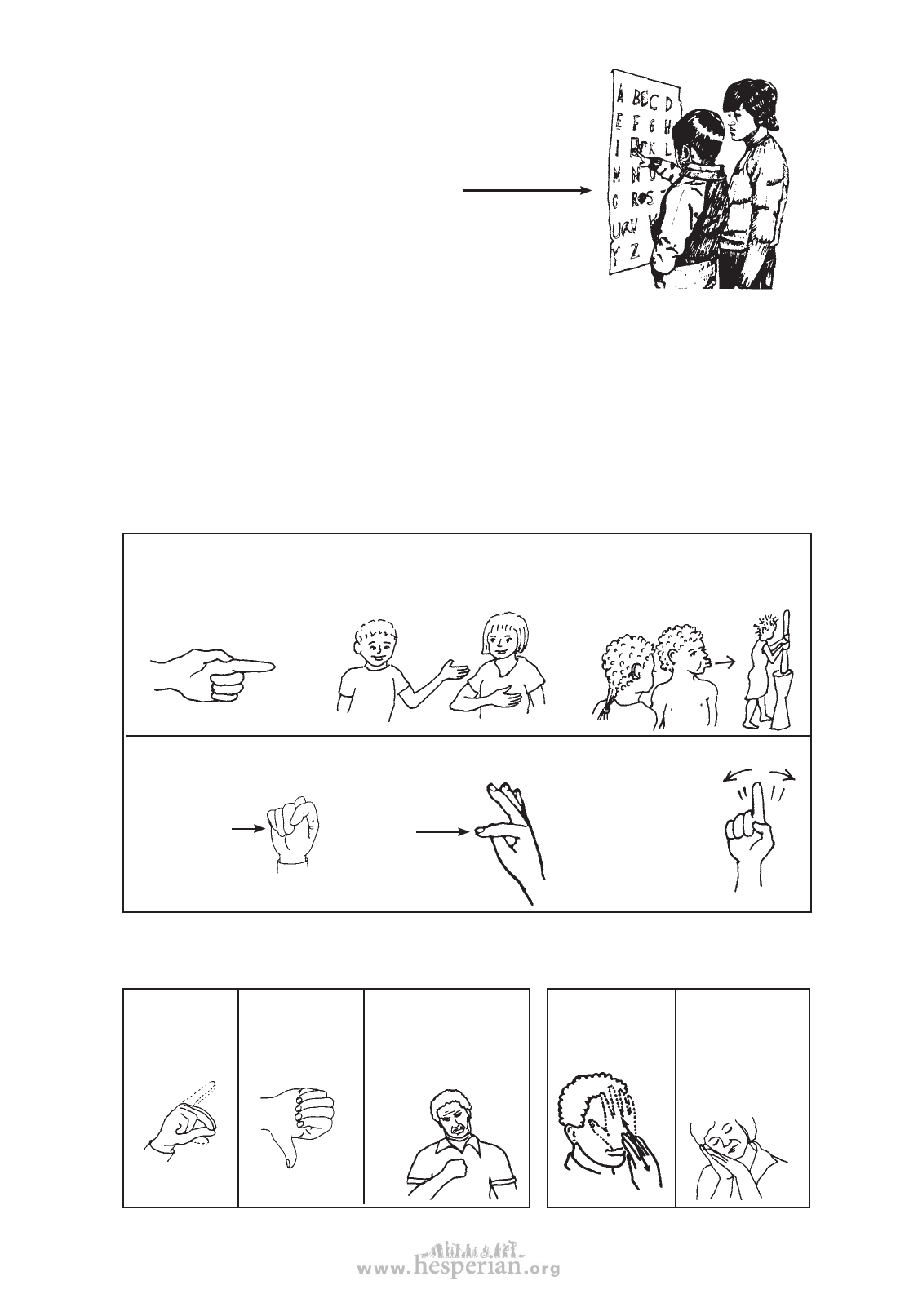
Many deaf persons combine these 3 systems. With
other deaf persons they use mostly the first, with hearing
persons or a ‘translator’ they use mostly the second, and
finger spell difficult words. When ‘talking’ to someone
who does not know sign language, they can write down
what they need to say—or use a letterboard.
DEAFNESS 267
Learning to sign
If possible, contact the Association of the Deaf in your country, and see if you can
get a guidebook to sign language adapted to your local area or spoken language. If this
is not possible, you can use the local signs and gestures, and invent more signs of your
own.
On the next few pages we give ideas for making up signs, and examples for common
words. Most are signs used in American Sign Language. You will want to change them
to fit the gestures, customs, and language of your area. Here are some ideas:
• Choose signs that will not offend the local people. (Deaf people already have a
difficult time being accepted.) Here are some examples:
In the USA a pointing
finger is used to indicate
different persons
(me, you, her, them).
In some countries it is not polite
to point a finger, so an open
hand is used.
ME
YOU
In other places even pointing
with an open hand is not polite,
and people point with their lips.
HER
In the signed
alphabet used in
the USA and Canada
the letter ‘T’ is
made like this.
However, in many
countries, this is
an offensive gesture.
Therefore, in
this book we
also use the
‘T’ sign
from Spanish
and Danish.
Also avoid confusion.
For example, the sign
for “WHERE” in the
USA is a common
gesture for “NO” in
Mexico.
• Use local signs. If people in your area already have a gesture or sign for something,
use that instead of a new or foreign one. For example:
The American
sign for NO
is this:
Some countries
use this sign
for NO:
In Jamaica NO and
NOT are often said
by a negative look
and shake or tilt of
the head.
NO,
NOT ME
The American
sign for
SLEEP is this:
In Nepal this sign
is used for
SLEEP. It is
understood
almost
everywhere.
disabled village children